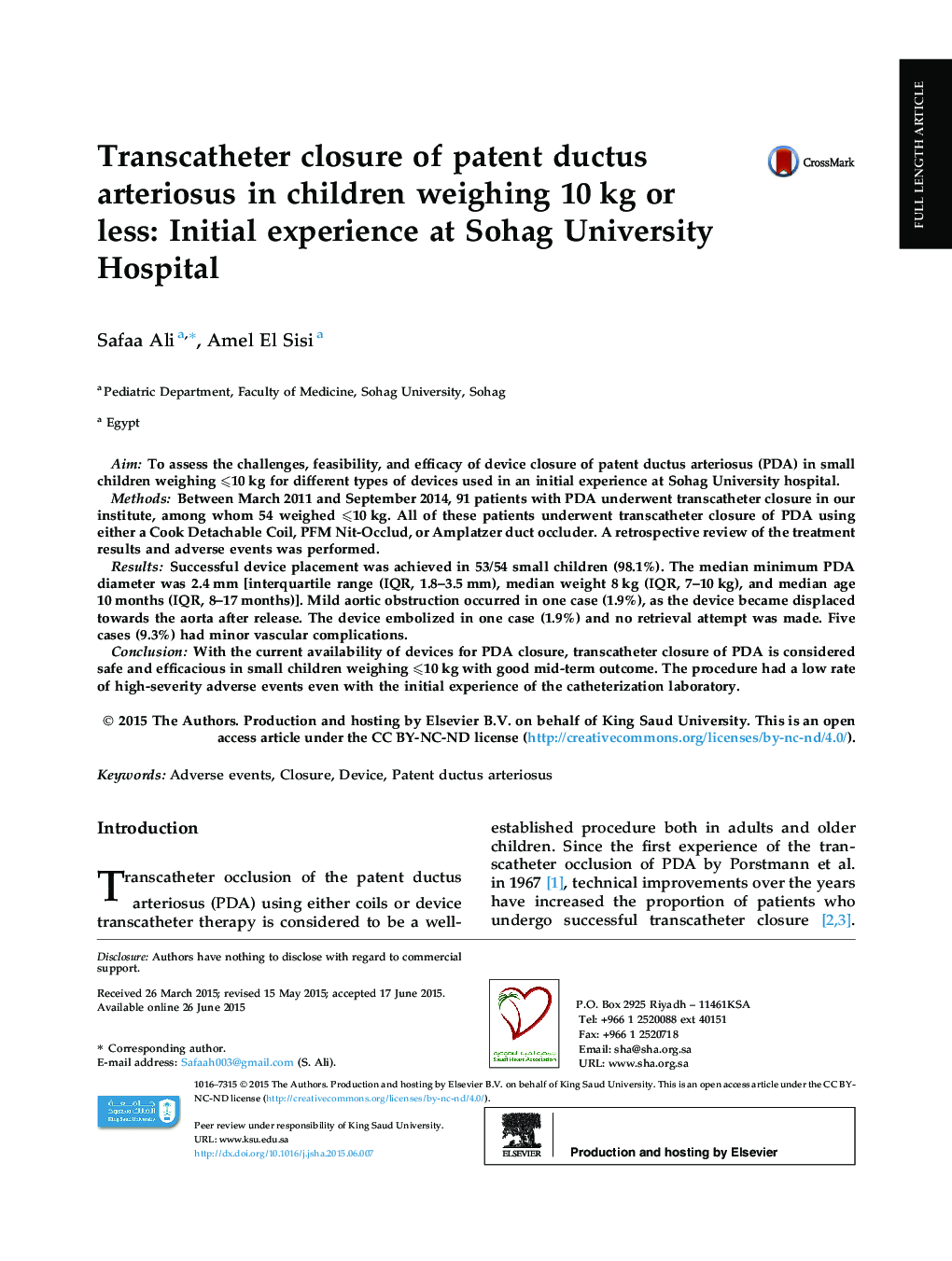| Article ID | Journal | Published Year | Pages | File Type |
|---|---|---|---|---|
| 2977890 | Journal of the Saudi Heart Association | 2016 | 6 Pages |
AimTo assess the challenges, feasibility, and efficacy of device closure of patent ductus arteriosus (PDA) in small children weighing ⩽10 kg for different types of devices used in an initial experience at Sohag University hospital.MethodsBetween March 2011 and September 2014, 91 patients with PDA underwent transcatheter closure in our institute, among whom 54 weighed ⩽10 kg. All of these patients underwent transcatheter closure of PDA using either a Cook Detachable Coil, PFM Nit-Occlud, or Amplatzer duct occluder. A retrospective review of the treatment results and adverse events was performed.ResultsSuccessful device placement was achieved in 53/54 small children (98.1%). The median minimum PDA diameter was 2.4 mm [interquartile range (IQR, 1.8–3.5 mm), median weight 8 kg (IQR, 7–10 kg), and median age 10 months (IQR, 8–17 months)]. Mild aortic obstruction occurred in one case (1.9%), as the device became displaced towards the aorta after release. The device embolized in one case (1.9%) and no retrieval attempt was made. Five cases (9.3%) had minor vascular complications.ConclusionWith the current availability of devices for PDA closure, transcatheter closure of PDA is considered safe and efficacious in small children weighing ⩽10 kg with good mid-term outcome. The procedure had a low rate of high-severity adverse events even with the initial experience of the catheterization laboratory.
